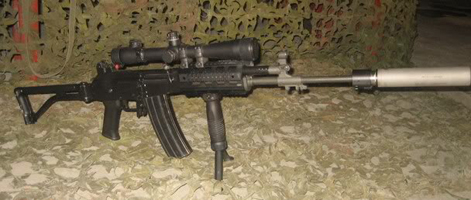March 21, 2015
The Disappointment That Is the F-35
By David Archibald
First of all, be aware that strange things happen in the U.S. military-industrial complex that President Eisenhower warned us about. Take the example of the M1 Abrams tank. The U.S. Army has an inventory of 6,300-odd of these tanks, including 4,000 in storage in desert. It doesn’t need any more, but Congress keeps voting to keep the production line going, churning out unwanted tanks. Ironically, that means that funds aren’t available to upgrade the gas turbine engines of its existing tanks to make them more efficient. The M1 Abrams gets half the fuel mileage of the German Leopard II tank of similar capability.
But this is a tale about the F-35. It has been said that the story of the F-35 begins in 1942 in the Battle of Guadalcanal. The U.S. Marines, doing the ground fighting, were upset that the other services weren’t providing enough air cover. The pounding they got from the lack of air cover is part of their institutional memory. So when the U.S. Defense Department decided to build a 5th-generation stealth fighter to replace the F-16, the U.S. Marines insisted that this include a short take-off and vertical landing (STOVL) variant. The trade-offs necessary to effect this fatally compromised the whole project so that none of the variants do their job adequately. Specifically, the requirement to have a lift fan 1.27 meters in diameter on the centerline of the aircraft behind the pilot resulted in two bomb bays instead of just one on the centerline. This made the aircraft wider, draggy, slower, and less maneuverable.
In short, the F-35 can’t turn, can’t climb, can’t run.
In fact, it isn’t a fighter aircraft in the first place. It is really a light bomber, designed as such from the get-go. The recently retired head of Air Combat Command for the U.S. Air Force, General Mike Hostage, has been quoted as saying, “The F-35 is geared to go out and take down the surface targets.” The original requirement that evolved into the F-35 was "Battlefield Interdiction and Close Air Support" with the intent being to deal with lightly defended ground targets after the F-22 knocked out the really dangerous air defenses. That assumes that a lot of F-22s are available. They aren’t because of one of President Bush’s poorer staff choices, that of Robert Gates as defense secretary. Retained by President Obama in that role, the beginning of the end was signaled when he noted that the F-22 wasn’t being used in Afghanistan.
In the air combat role, Hostage says that it takes eight F-35s to do what two F-22s can handle. He has said further of the F-35: “Because it can’t turn and run away, it’s got to have support from other F-35s. So I’m going to need eight F-35s to go after a target that I might only need two Raptors to go after. But the F-35s can be equally or more effective against that site than the Raptor can because of the synergistic effects of the platform.” He has also been quoted as saying that an F-35 pilot who engages in a dogfight has made a mistake. Further from General Hostage, “If I do not keep that F-22 fleet viable, the F-35 fleet frankly will be irrelevant. The F-35 is not built as an air superiority platform. It needs the F-22. Because I got such a pitifully tiny fleet [of F-22s], I’ve got to ensure I will have every single one of those F-22s as capable as it possibly can be.”
The F-35’s primary role in ground attack is confirmed by its weapons bays, which each have room for a 2,000-lb. bomb and one air-to-air missile. It could carry more bombs and missiles on its wings at the cost of stealth. At the same time, stealth against radar isn’t the be-all-end-all of aerial combat. The F-35 can be spotted by low-frequency radar a hundred miles away, as all aircraft can be. Infrared detection can also work at a considerable distance under the right atmospheric conditions.
For example, all Sukhois after and including the Su-27SK have Infra Red Scan and Track (IRST) that keeps getting better. The latest IRST – the OLS-35 – will detect, track, and engage the F-35 at about 45 miles.
The F-35 has one system, still in development, that has considerable potential if it ends up working as promised. This is the Distributed Aperture System, which allows the pilot to see all around the aircraft in every direction. The view is displayed inside the pilot’s visor using data from cameras around the aircraft. Each helmet is made to fit the head of the pilot who will use it. The system allows the pilot to see through the floor of the aircraft and see the ground underneath. It also analyzes all the other information coming in from the radar and the infrared cameras around the aircraft and presents it on the field of view, along with similar data from other F-35s our pilot is flying with. The system determines what each threat is, ranks them all in priority, and recommends what countermeasure should be used. The F-35 can fire air-to-air missiles against aircraft flying behind it that the pilot cannot see.
Flying as a pack of at least eight, F-35s in theory should be able provide mutual fire support and do pretty well. The situational awareness of the F-35 could be good enough that the aircraft could be a sort of mini-AWACS directing 4th-generation fighters such as the F-18 onto targets. That said, other aircraft, already in service, do the same thing. All the Sukhois and the Swedish Gripen have intra-flight data-sharing and are truly mini-AWACS. Gripens are optimized for “cloud shooting,” so one aircraft targets and another passive aircraft shoots.
The F-35 is a complicated aircraft, though, and may prove to have been just too ambitious. Its software includes over 30 million lines of code, which is six times more than that of the F-18E/F Super Hornet. There are plenty of bugs in the software and the aircraft’s other systems that will take years to work through.
One of the more important bugs is the helmet vision system, which isn’t as seamless as it needs to be and produces too many false alarms. And if the helmet isn’t fixed, it definitely won’t be a fighter, because the aircraft’s bulkhead behind the pilot continues at the same height as the canopy. The pilot won’t be able to see what’s behind him if the helmet is not working. He also won’t be able to see below him, because the aircraft is too wide. Most fighters have the pilot sitting up where he can see as much as possible. The F-35 pilot’s head is down in the fuselage, as in a bomber.
With respect to close air support of ground troops, the A-10 aircraft, dedicated to that role, carries 1,350 rounds of 30-mm ammunition. By comparison, due to the compromises necessary to get the STOVL version to fly, the gun of the F-35 STOVL version is carried externally in a pod. It will hold 180 rounds of 25-mm ammunition weighing about 200 pounds. The gun could burn through its ammunition load in three seconds. The STOVL F-35 is an expensive way of carrying 200 lb of ordnance into battle. It carries two 1,000-lb bombs instead of the 2,000 lb bombs on the air force version, once again due to weight limitations. There are likely to be far more cost-efficient ways of providing fire support to the troops. While we are the subject of the F-35’s gun, the software for the aircraft to be able to fire it won’t be ready until 2017, and possibly 2019 by some reports. The software to enable the STOVL F-35 to drop the Small Diameter Bomb II (short enough to fit the bomb bay) won’t be uploaded until 2022.
A good summary of the current status of the F-35’s bugs and shortcomings is provided by the U.S.-based Project on Government Oversight (POGO), from a Department of Defense report. The U.S. defense procurement system requires that weapons development programs remain on schedule or they become in danger of being scrapped. The F-35 is well behind schedule, but production has begun before testing has been completed. POGO’s analysis shows that Lockheed Martin, the aircraft’s developer, has been cooking the test results to meet project milestones. The effect of that will be an expensive retrofitting of completed aircraft estimated at U.S. $60 billion.
There is an incident in the POGO report that suggests that the F-35 might be fatally flawed because of the compromises made to get the thing to fly in the first place. In June 2014, there was an engine fire in an F-35 that was taxiing that resulted in the aircraft being lost. The aircraft that blew up was damaged, three weeks earlier, during two seconds of flight when the test pilot, operating well within the safety envelope of the aircraft’s abilities in a ridge roll maneuver, put G forces, yaw, and roll stresses on the aircraft all at the same time. The F-35’s engine is said to have the problem of being too flexible. That may be because the airframe is too light, in which case this is a problem that is baked in the cake. There are severe flight restrictions as a result. If you put a fighter into a snap-turn to (say) avoid a missile, the gyroscopic forces within the large diameter engine are huge. Both the engine and the aircraft have weight problems, and beefing up either or both compromises the already overweight aircraft. The practical outcome of that will be that the F-35 will be restricted in its maneuverability by its software.
Another restriction is a limit of Mach 0.8-0.9 at low altitude because the F-35 cannot dissipate its heat. Its competitors are limited to about Mach 1.2, so if there is a low-altitude engagement, “can’t run” becomes a serious threat to its survival. In fact, in battle simulations of the F-35 against the Su-35, 2.4 F-35s are lost for each Su-35 shot down. Pitting the Gripen against the Su-35 results in 1.6 of the Sukhois shot down for each Gripen lost. The loss exchange ratio of the Gripen against the F-35 is said to be breathtaking – in the Gripen’s favor.
There is potentially a positive outcome out of all this. The coming war in the Pacific will have a need for an aircraft that can fly long distances straight and level without stressing the airframe – to fulfill the maritime strike role in delivering anti-ship cruise missiles. The best of these is the Long Range Anti-Ship Missile (LRASM) with a range of 575 miles. The F-35 would have a useful role while staying out of harm’s way.
There is one view in the defense community that the F-35 program will die of embarrassment before the production of about 500 aircraft. This will leave a gaping hole in many countries’ procurement schedules, and there will be a mad scramble for supply from the European fighter makers. The F-16 and the F-18 are still being produced, though the latter’s production line closes in 2017. The tooling to make the F-22 has been kept, and the production line could be restarted. That is looking like the best option.
David Archibald, a visiting fellow at the Institute of World Politics in Washington, D.C., is the author of Twilight of Abundance (Regnery, 2014).
Read more:
http://www.americanthinker.com/articles ... z3Vh4rFHEu
Follow us: @AmericanThinker on Twitter | AmericanThinker on Facebook










